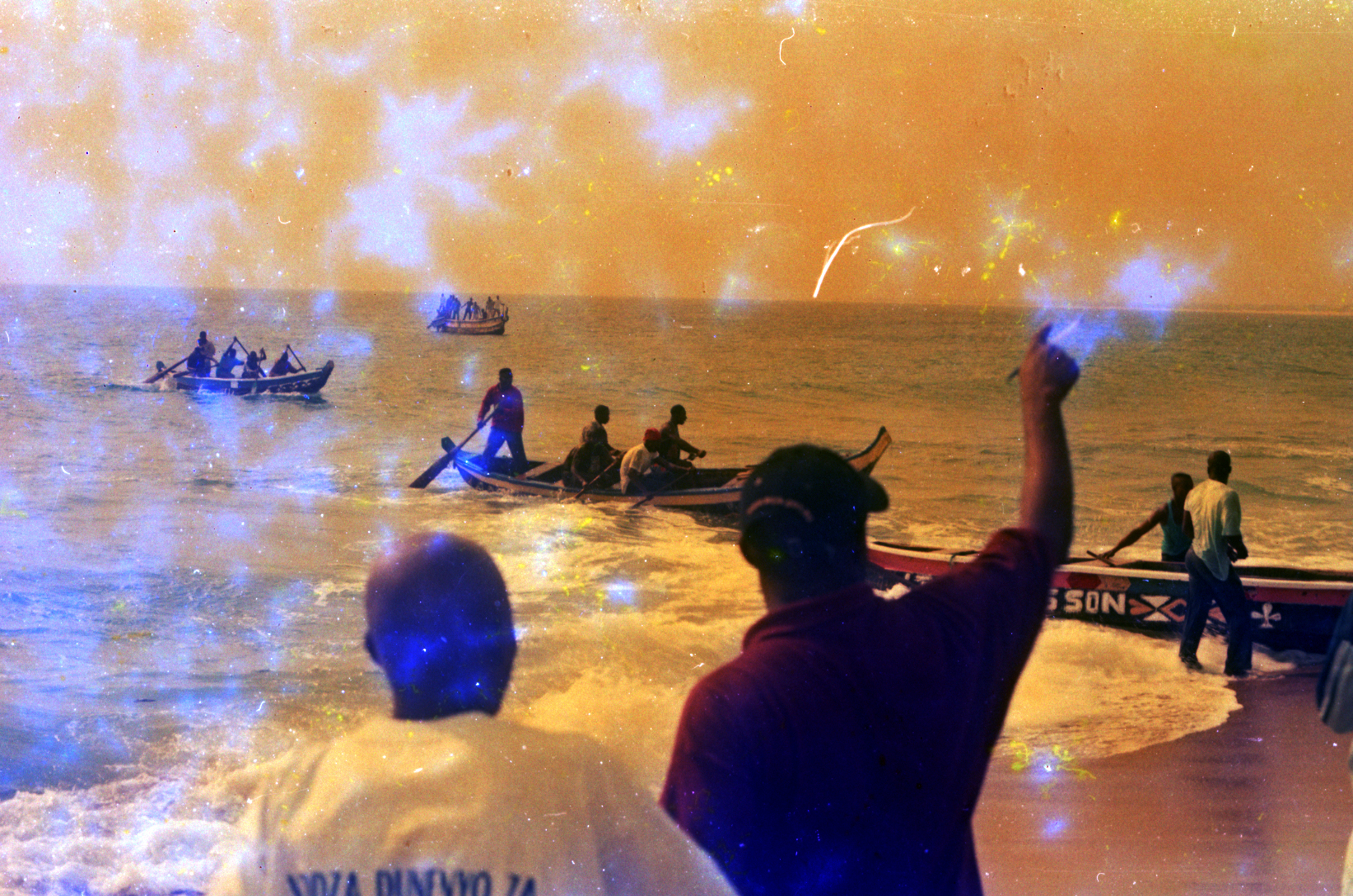See Adjoa Armah, “In our language the word for the sea means the ‘spirit that returns,’” Afterall, September 8, 2020, ➝.
Interview with the author.
Max Hantel, “Rhizomes and the Space of Translation: On Édouard Glissant's Spiral Retelling,” Small Axe 17, no. 3 (2013): 100.
Doreen Mende, “The Code of Touch: Navigating Beyond Control, or, Towards Scalability and Sociability,” e-flux journal 109, May 2020, ➝.
Ibid.
Geert Lovink, “Cybernetics for the Twenty-First Century: An Interview with Philosopher Yuk Hui,” e-flux journal 102, September 2019, ➝.
Here I refer specifically to the history of Black theorizing taking narrative forms. See Barbara Christian, “The Race for Theory,” Feminist Studies 14, no.1 (1988): 67–79.
Katherine McKittrick, Dear Science and Other Stories (Durham: Duke University Press, 2021), 7.
Katherine McKittrick, Dear Science and Other Stories (Durham: Duke University Press, 2021), 7.
Ashon T. Crawley, Blackpentecostal Breath: The Aesthetics of Possibility (New York: Fordham University Press, 2016), 241.
Improvisation here is not understood as a lack of preparedness, but as the merging of rigorous attentiveness, care, responsiveness, attunement to the work of curiosity, memory, and deep study. An important element of Black aesthetics, social life, spatial practices and livingness. See AbdouMaliq Simone, Improvised Lives: Rhythms of Endurance in an Urban South (After the Postcolonial) (Cambridge: Polity Books, 2018).
Study is understood here as a speculative, collaborative and relational practice. See Stefano Harney and Fred Moten, The Undercommons: Fugitive Planning and Black Study (New York: Minor Compositions, 2013).
Peter Wall Institute for Advanced Studies, “Denise Ferreira da Silva|Transformative Theory of Justice,” YouTube, June 12, 2020, ➝.
Keguro Macharia, “Difference: An Audre Lorde Archive,” The New Inquiry, July 24, 2017, ➝.
Yuk Hui, “Archivist Manifesto,” Mute, May 22, 2013, ➝.
Ibid.
Ibid.
Saman Archive, ➝.
Chanda Prescod-Weinstein, “Public thinker: Katherine McKittrick on Black Methodologies and Other Ways of Being,” Public Books, February 1, 2021, ➝.
The author would like to thank students of Transformative Study, from Central Saint Martins College of Art and Design, BA Fine Art Stage 2 2020/2021. She would also like to thank the college’s BA Fine Art Stage 1 students and Critical Studies staff for their contributions in transforming this text from its lecture form, Can the Spiral Make the World Otherwise? Finally, she would like to express gratitude for the relationships and encounters that sustain her living and learning.
Survivance is a collaboration between the Solomon R. Guggenheim Museum and e-flux Architecture.
